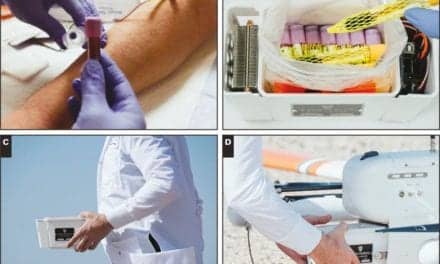The genome annotation and discovery platform of Tute Genomics has been selected to support efforts to advance Alzheimer’s disease genetics research at Brigham Young University (BYU). The collaboration involves analysis and interpretation of next-generation sequencing data from more than 1,000 exomes and genomes to identify new genetic variants associated with the disease.
“Collaboration is the key to discovering novel variants in genomics research, and Tute Genomics is honored to play a role in supporting this important work,” said Kai Wang, PhD, president of Tute Genomics. “This is an example of how our platform significantly enhances the ability for researchers to identify disease genes and variants from thousands of genomes.”
John “Keoni” Kauwe, PhD, is leading a group of scientists from the BYU College of Life Sciences that is using the Tute Genomics platform in a large-scale effort to better understand the genetic basis of Alzheimer’s disease. The causes of this brain disease are still not fully understood and traditional treatments have so far proven unsuccessful. Kauwe’s group is looking to utilize Tute Genomics’ biomarker discovery platform to identify novel targets that may be used for therapeutic interventions.
Based in Provo, Ut, Tute Genomics is developing cloud-based solutions to accelerate genetic discovery and enable precision medicine. Tute’s clinical genome interpretation platform assists researchers in identifying disease genes and biomarkers, and assists clinicians and labs in performing genetic diagnosis. Given sequencing data on a genome or a panel of genes, Tute can return over 125 annotations on variants and genes; perform family-based, case/control or tumor sample analyses to identify causal disease genes; and generate clinical reports for clinicians to focus on clinically relevant and actionable findings.
“We have been extremely impressed with the Tute platform thus far, and we already have a number of research findings we are evaluating,” said Kauwe. “We are excited to utilize Tute’s technology to support our novel approaches to finding genetic variants associated with Alzheimer’s disease using exome and whole genome sequence data.”
The Alzheimer’s Genetic Analysis Group is a collaborative effort led by John Hardy, PhD, at University College, London. Other principal investigators in the group include Kauwe; Alison Goate, DPhil, and Carlos Cruchaga, PhD, at the Washington University School of Medicine; and Andrew Singleton, PhD, at the National Institutes of Health. Late last year this group discovered a novel genetic variant that doubles a person’s risk of developing the disease later in life. The study included families that had several members with Alzheimer’s. The scientists sequenced and compared genes of those individuals affected by the disease and those who were not. They were then able to identify variations in a gene that appeared in affected family members.1
Another of their recent studies has helped lift the veil on some of the mystery surrounding the causes of Alzheimer’s. The research team analyzed data from more than 25,000 people and reported that a rare genetic mutation in TREM2, a gene with function in the immune and inflammatory response, increases the risk of Alzheimer’s disease.2
“Dr. Kauwe and the Alzheimer’s Genetic Analysis Group are making exciting progress towards understanding the genetic underpinnings of Alzheimer’s disease. The first step towards effective treatments and an eventual cure is to fully understand the genetics and neurobiology of the disorder,” said Reid Robison, MD, MBA, cofounder and CEO of Tute Genomics.
For further information visit Tute Genomics.
References
1. Cruchaga C, Karch CM, Jin SC, et al. Rare coding variants in the phospholipase D3 gene confer risk for Alzheimer’s disease. Nature. 2014;505(7484):550–554; doi: 10.1038/nature12825.
2. Guerreiro R, Wojtas A, Bras J, et al. TREM2 variants in Alzheimer’s disease. New England Journal of Medicine. 2013;368(2):117–127; doi: 10.1056/NEJMoa1211851.







